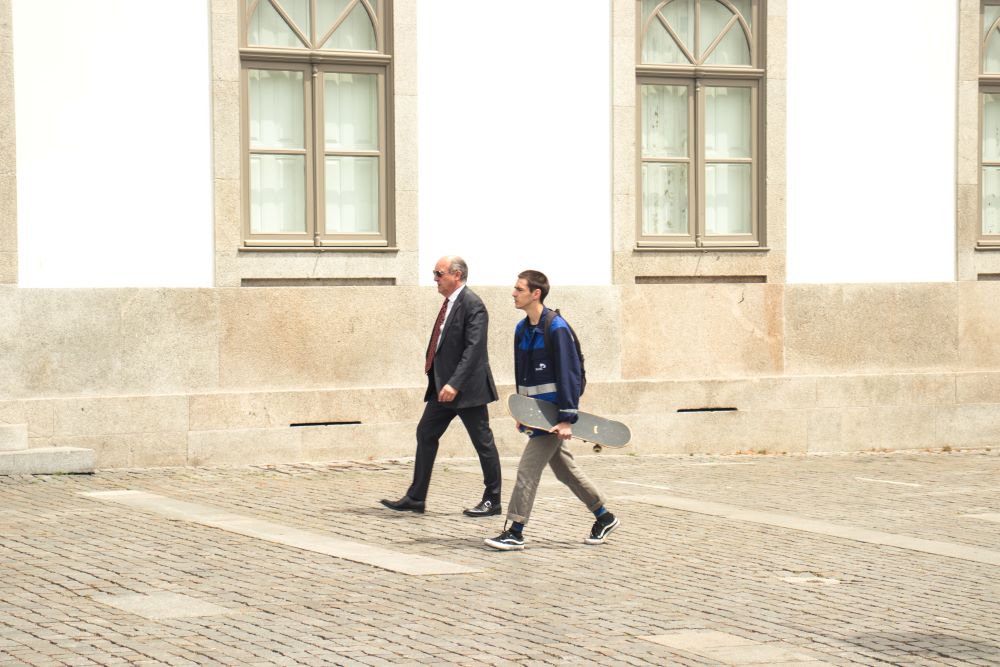We live in a culture that idolises youth and stigmatises old age but, with more and more of us living and working longer, this has to change if we want to create thriving workplaces in future.
The OECD estimates, in its ‘Promoting an Age-Inclusive Workforce’, that a genuinely multigenerational workforce where all ages enjoy equal opportunities and treatment, could raise GDP per capita by over 19% over the next three decades.
Its research also shows – which it admits is “contrary to common perceptions” – that older workers can “boost firm productivity, not only through their own experience and know-how, but also by enhancing team performance”.
The caveat?
This can only happen, advises the OECD, if employers have the “right policies” in place and “social dialogue” which ensures the benefits of a multigenerational workforce are fully understood and realised.
Software company IRIS Software Group (IRIS), winner of our ‘Best Integration of DEI’ Make A Difference Award, is currently addressing this issue at the moment. Naomi Cosgrove, Senior HR Programme Advisor, is taking the lead, and has deeply researched best practice finding the area fascinating and complex.
“We potentially have four generations in our workforce. And all of them have really different frames of reference. It got me thinking – how is our wellbeing offer landing with people who might be straight out of school, compared to those who are over 50? One reason I find it so interesting is that to really make an impact in wellbeing, inclusion and belonging, it can’t be one size fits all.”
Naomi Cosgrove, Senior HR Programme Advisor, IRIS Software Group
Like many companies, IRIS quickly realised that its graduates were well served with its ‘Activate’ programme for young employees entering the world of work. Older employees, however, didn’t have a dedicated programme when they join. So, one of the first steps Cosgrove has taken is to create an Older Workers Policy, setting out the company’s statements and intentions. For instance, IRIS wants to ensure that 90% of its over 45s in the UK will have a physical health check over the next two years.
“We recognise that this older age bracket could potentially be susceptible to more critical illnesses and we want people to ‘know their numbers’ and understand their health, so they can take steps to keep healthy,” says Cosgrove.
Listening to workers of all ages
Another step IRIS is taking is setting up a steering group made up of employees from across the organisation and the age ranges. They’ll meet quarterly and give feedback to management about what matters to them and what more IRIS can do to support them throughout their life stages.
Out of all the protected characteristics, age is potentially the most challenging to address because there is less shared ground; while other networks cement around joint understanding of an aspect of identity – from ethnicity to sexual orientation – age doesn’t have the same commonality, apart from the fact we all have ‘an’ age. Also, ageism is so ingrained in our society it can be tricky to identify.
Ageism is ingrained in our culture
As Cosgrove says, age is probably the protected characteristics that is least called out in our daily professional and personal lives, with ‘old’ often referred to colloquially in a derogatory fashion rather than complimentary.
Then again, Michael O’Reilly, the Founder of the Age Diversity Network, who Cosgrove is consulting on training, believes that we need to raise awareness, while not getting too carried away:
“Yes, it’s an employer’s responsibility to be open and discuss this topic because age is a protected characteristic. We do need to be careful and use appropriate language – and we need to be practical. If you’re faced with ageism, the best thing to do is try and humanise it by fostering understanding of how the older employees might feel.”
Michael O’Reilly, the Founder of the Age Diversity Network,
As for differing frames of reference, he says there is “no silver bullet that’s going to fix that”. The best thing, again, is increasing understanding amongst all employees. He refers to an example of generational differences he remembers with his kids when they started using the word “sick” and he assumed it was negative, not realising it was their way of saying something was great!
“We need to be able to say ‘I haven’t got a clue what that means, can you explain it to me?’” he says.
Humour can get a message across
Amongst the many different courses of education & training his company delivers, one particularly popular method is the use of actors who enact scenarios to show how the same situation can be handled differently, often with humour, to make the topic personal to the audience. The scenarios are all based on the issues that have been identified pre-workshop.
He says he’s literally seen ‘light bulb’ moments cross the faces of younger employees in these sessions sometimes, for example, in relation to how they have conducted an interview with an older candidate.
A sense of being overlooked
The most common experience he hears about from older employees is that when they are looking for work, or when they are in a role already, and they get the sense that they are being overlooked, or not included.
“They start to think. ‘Oh, what is going on here?’ And then they start to realise it might be because of their age,” he says. His own company research shows that 91% of employed survey respondents want to change jobs because they don’t feel the organisation they work for values, or includes, them; a hugely damning statistic that employers need to take heed of.
Employers missing a trick when it comes to older workers
Youth issues may have the allure of being trendy and more visible on platforms like social media – and make a snazzy wellbeing campaign visual – but employers are missing a huge trick currently when it comes to the value of older workers.
“They are missing out on two fronts in particular,” says O’Reilly. “They are missing out on the skills and expertise available in the recruitment market. And the skills, knowledge and expertise under their own roof, in their workforce.”
The benefit of mentoring
One area where older employee can add huge value is in mentoring younger employees. As O’Reilly says, it doesn’t matter how many training courses a young person goes on, there is nothing like learning on the job, in the heat of a moment. While everything might seem new and unfamiliar, and not yet imbedded in a young recruit’s brain, there will undoubtedly be a colleague who has the calmness that comes with years of using a tool, or a process, that could be there to offer a steady hand.
But it’s not just the operational tasks that older people can support younger employees with. Vitally, they can help them with an area which young people are particularly struggling with: emotional intelligence and resilience.
AXA’s latest study into Mind Health shows this. As AXA’s Head of Wellbeing, Chris Tomkins, told us at the launch of this report:
“When we think of the younger generations coming up the ranks, we tend to think of young dynamic people taking on the world. However, they seem less resilient to change. Actually, skills for good mind health typically mature with age, which really underlines the value of the older workforce; often their mind health is stronger, while their physical health may be weaker, developing risks around blood pressure, weight and diabetes.”
AXA’s Head of Wellbeing, Chris Tomkins
However, rather than having one employee ‘mentor’ the other – which inherently suggests a power imbalance – the best way to manage this relationship is when it’s set up on an equal footing, according to Nero Ughwujabo, Senior Strategy Adviser, Equality Diversity and Inclusion, at The Prince’s Trust.
Mutual mentoring is better
He calls this “mutual mentoring”. At the Prince’s Trust, this mainly happens between senior leaders and individuals with protected characteristics, but Ughwujabo believes this could work equally well fostering understanding around age between all employees.
“From an equality perspective, we want to educate both sides and there’s a big difference between the ‘deficit’ and ‘empowerment’ model,” he says. “The ‘deficit’ model assumes there is something ‘wrong’ about the person with the protected characteristic, which will be fixed through mentoring, which is just not true, or acceptable.”
All generations have something to learn from each other
Mutual mentoring, though, recognises that all parties have something to learn to build a better organisation. The important factor for success is the “atmosphere” which is created of deep listening to the other, to really understand their experience, and giving the conversation structure so this can be done equally.
And respect. Of Nigerian descent, Ughwujabo says he notices the lack of respect UK culture can have compared to his homeland, where the wisdom of elders is naturally respected, even when the older person is in a more junior position to you. Other practical ideas he suggests include showcasing stories of older workers and their experiences of working for the company and rewarding, and celebrating, long service.
All this is much delicious food for thought for progressive wellbeing leaders like Cosgrove who says: “We want to bring our employees together to understand and learn from each other, whatever their generation. I think if workplaces don’t start adapting to understand this, then they’re going to be left behind.”












